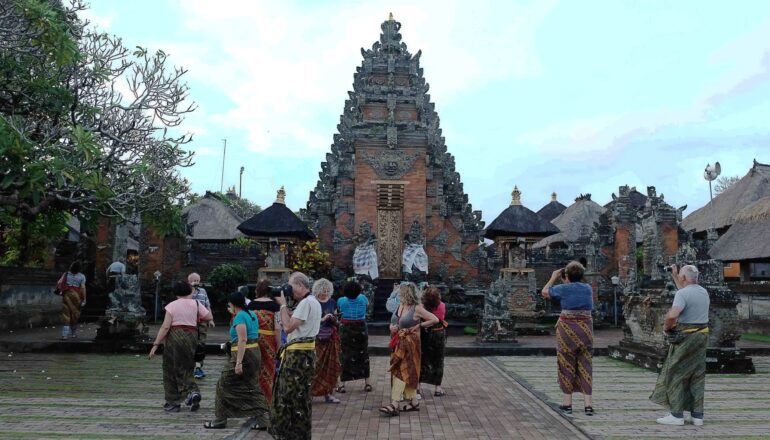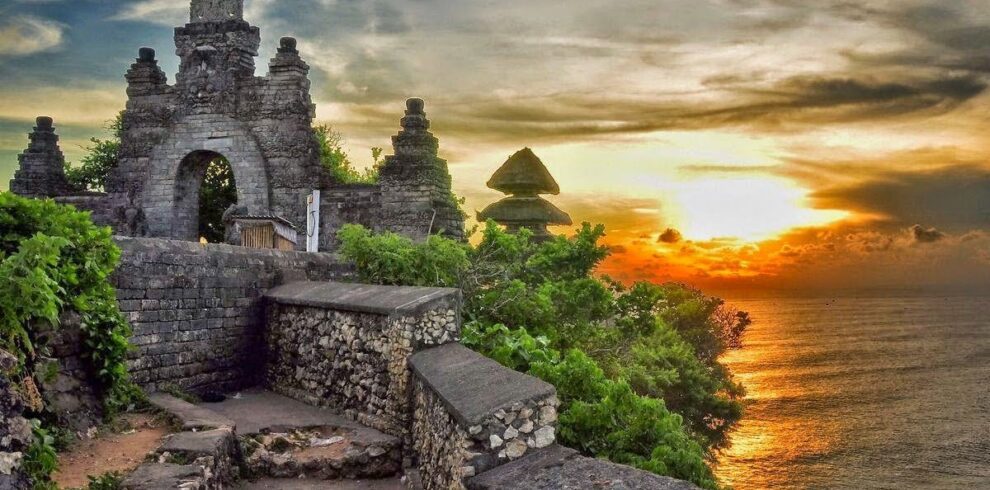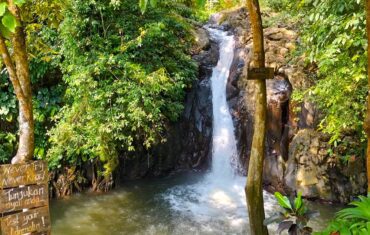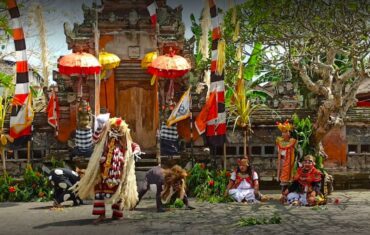Batuan Temple, locally known as Pura Puseh Batuan, stands as a testament to Bali’s rich cultural and spiritual heritage. Located in the village of Batuan, this temple is not only a place of worship but also a symbol of the island’s artistic and architectural prowess. Dating back to 1022 AD, Batuan Temple has been a cornerstone of the community, reflecting the harmonious blend of religion, art, and daily life in Balinese culture.
Historical Background
The origins of Batuan Temple trace back to the 11th century, during the reign of King Sri Aji Marakata. An inscription found at the temple confirms its establishment in 944 Saka, corresponding to 1022 AD. This period marked a significant phase in Balinese history, characterized by the unification of various sects under the guidance of Mpu Kuturan, a revered Hindu priest.
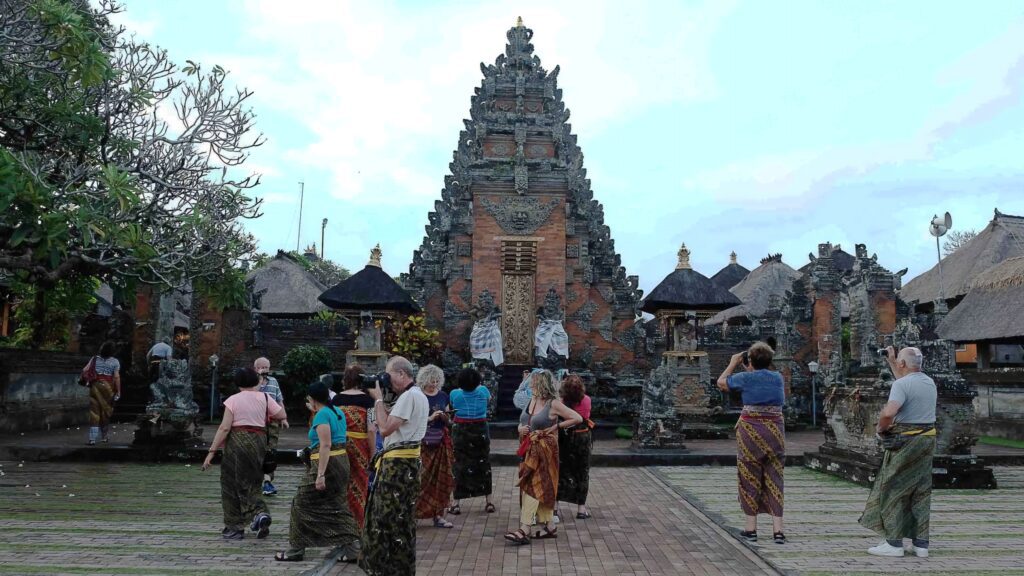
Mpu Kuturan introduced the concept of “Tri Kahyangan” or the “Three Temples,” which includes Pura Desa (village temple), Pura Puseh (origin temple), and Pura Dalem (temple of the dead), to structure the spiritual life of Balinese villages. Batuan Temple serves as the Pura Puseh, dedicated to honoring the village’s ancestors and the Hindu trinity: Brahma, Vishnu, and Shiva.
Read Here: Canang Sari: The Sacred Offering of Daily Life in Bali
Architectural Nuances
Batuan Temple showcases classic Balinese architecture, characterized by intricate stone carvings, tiered thatched roofs, and a layout that aligns with spiritual principles. The temple is divided into three main sections:
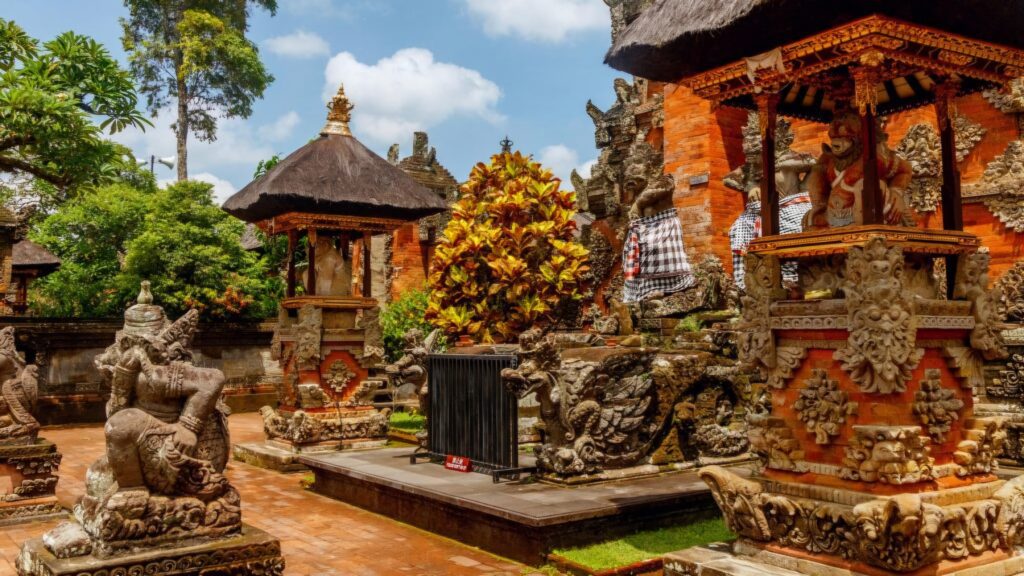
- Nista Mandala (Outer Sanctum): This is the entrance area, accessible through a split gate known as “Candi Bentar.” The gate is adorned with guardian statues and leads to a courtyard used for preparations and communal activities.
- Madya Mandala (Middle Sanctum): Here, you’ll find structures like the Bale Agung (great pavilion) and Bale Kulkul (drum tower). These pavilions serve as venues for meetings, performances, and housing the temple’s slit drum used to signal ceremonies.
- Utama Mandala (Inner Sanctum): The most sacred part of the temple, it houses the Padmasana shrine, dedicated to Sang Hyang Widhi Wasa, the supreme god in Balinese Hinduism. This area also contains Meru towers, multi-tiered shrines symbolizing Mount Meru, the abode of the gods.
The temple’s roofs are made from black palm fiber, known as “ijuk,” providing durability and a distinctive appearance. The stone carvings depict various deities and mythological scenes, reflecting the artisanship of the Batuan villagers.
Cultural Significance
Batuan Temple holds immense cultural importance for the local community. It is a center for religious activities, traditional arts, and communal gatherings. The temple plays a pivotal role during major Balinese festivals such as Galungan and Kuningan, which celebrate the victory of dharma (good) over adharma (evil). During these times, the temple is adorned with decorations, and villagers participate in rituals and performances.
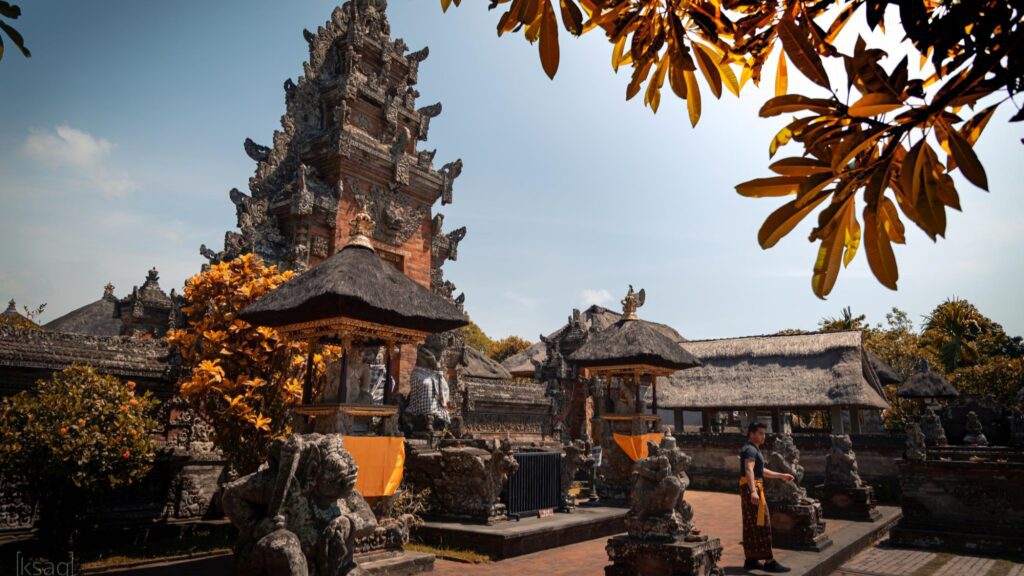
Moreover, Batuan is renowned for its unique style of painting, characterized by intricate details and dark, crowded compositions. This artistic tradition is deeply intertwined with the temple, as many artworks depict religious themes and are inspired by the temple’s carvings and ceremonies.
Temple Layout and Function
The layout of Batuan Temple is meticulously designed to facilitate various religious functions:
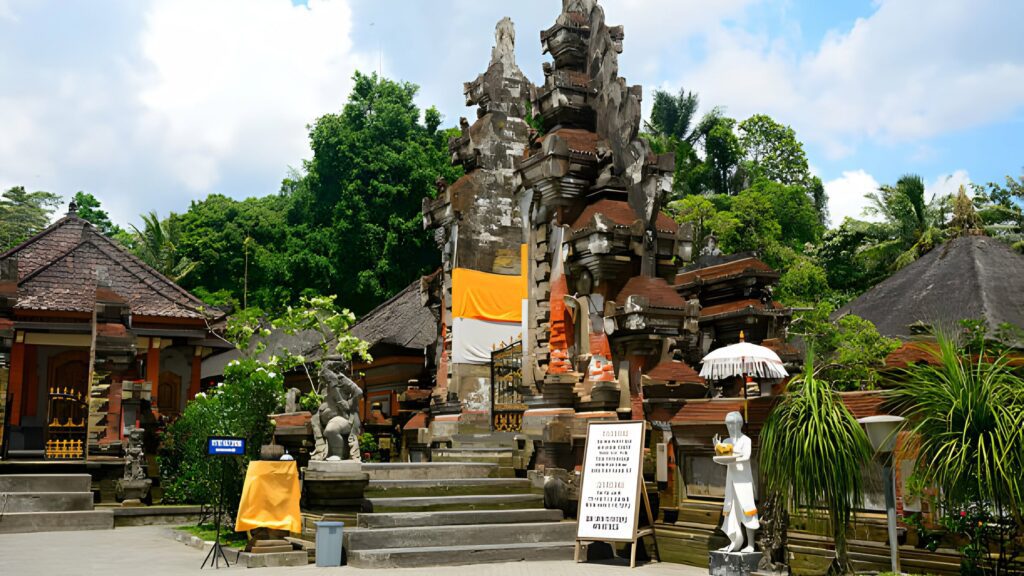
- Candi Bentar (Split Gate): Marks the entrance to the temple, symbolizing the transition from the outer world to the sacred space.
- Bale Agung: A large pavilion used for community meetings and rituals.
- Bale Kulkul: Houses the slit drum, which is sounded to announce ceremonies and important events.
- Padmasana Shrine: A towering structure dedicated to the supreme god, serving as the focal point for worship.
- Meru Towers: Multi-tiered shrines representing the sacred Mount Meru, each dedicated to different deities.
Each section of the temple serves a specific purpose, ensuring the smooth conduct of rituals and accommodating the community’s spiritual needs.
Ceremonies and Rituals
Batuan Temple is a vibrant center for various ceremonies that reflect the island’s rich spiritual tapestry:
- Odalan: The temple’s anniversary ceremony, held every 210 days, involves elaborate offerings, dances, and communal feasts.
- Galungan and Kuningan: Major festivals celebrating the triumph of good over evil, marked by temple decorations, processions, and traditional performances.
- Rejang Dance: A sacred dance performed by women to welcome the deities during temple festivals.
- Pendet Dance: A welcoming dance involving young girls offering flowers, symbolizing purity and devotion.
These ceremonies are integral to maintaining the spiritual balance and cultural continuity of the Batuan community.
Visiting Batuan Temple
For visitors, Batuan Temple offers a glimpse into Bali’s spiritual and artistic traditions:
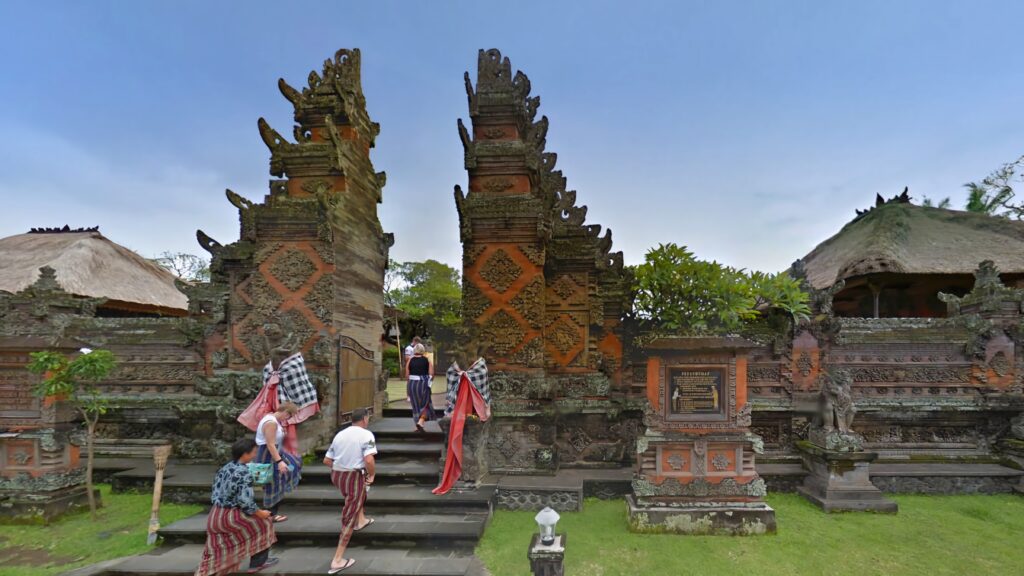
- Location: Situated in Batuan Village, approximately 10 kilometers south of Ubud.
- Dress Code: Visitors are required to wear a sarong and sash, which are often provided at the entrance.
- Best Time to Visit: Early mornings or late afternoons are ideal to avoid crowds and enjoy the serene atmosphere.
- Photography: Permitted in most areas, but it’s respectful to avoid taking photos during ceremonies unless allowed.
Engaging with the local guides can enrich your understanding of the temple’s history and significance.
Conclusion About Batuan Temple
Batuan Temple stands as a beacon of Bali’s enduring spiritual and artistic heritage. Its intricate architecture, profound cultural significance, and vibrant ceremonies offer a unique window into the island’s soul. So, whether you’re a spiritual seeker, art enthusiast, or curious traveler, a visit to Batuan Temple promises a deeply enriching experience.
Read Here: How to Trek Mount Batur: Bali’s Best Sunrise Hike for Adventurers
The Best Trip Destination
Bali, Indonesia, beckons with its diverse allure. Explore Ubud’s cultural treasures, witness the iconic Tanah Lot Temple at sunset, and surf the waves of Kuta Beach. Discover the scenic beauty of Tegallalang Rice Terraces and embrace the lively atmosphere of Seminyak. Dive into the underwater wonders of Amed, relax on the pristine shores of Nusa Dua, and wander through ancient temples in the heart of Bali. Whether seeking vibrant nightlife, serene landscapes, or cultural richness, Bali’s enchanting destinations cater to every traveler’s desire.
Ubud (18 Trips)
Eastern Bali (7 Trips)
Southern Bali (5 Trips)
Northern Bali (5 Trips)
Nusa Penida Island (8 Trips)
Western Bali (6 Trips)
The Best Activities In Bali
Indulge in Bali’s diverse activities, from surfing the waves in Kuta to exploring cultural treasures in Ubud. Snorkel vibrant coral reefs in Amed, trek lush rice terraces, and rejuvenate in serene spa retreats. Dive into the lively nightlife of Seminyak, witness traditional dance performances, and sample local delicacies in bustling markets. Whether it’s hiking Mount Batur for a sunrise vista or embracing the spiritual ambiance of ancient temples, Bali offers a kaleidoscope of experiences for every traveler’s passion

